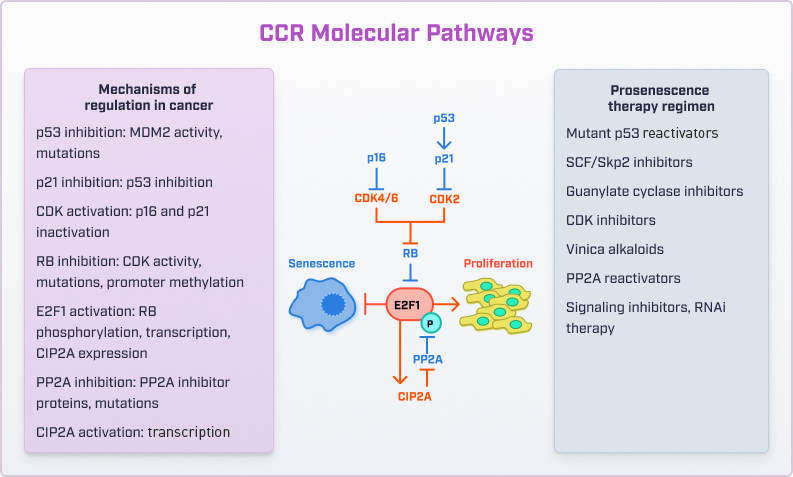Gaining clarity on the mechanisms
behind bladder cancer
The pathophysiology of bladder cancer is complex and multifactorial
To date, the strongest established risk factors for bladder cancer include1
Older age
Male gender
Smoking
Occupational exposures
However, there is increasing awareness and recognition of the critical role molecular and genetic factors play in the development and treatment of bladder cancer2
The retinoblastoma (Rb)-E2F pathway is altered in many cancers, including bladder cancer3
This alteration has been associated with progression, high rates of recurrence, and poor outcomes3
The Rb-E2F pathway is a critical regulator in the underlying biology of bladder cancer4
When functioning normally, it acts as a brake to prevent cell proliferation.5 Loss of functionality leads to loss of cell cycle control6

- The normal cell cycle processes are compromised
- Uncontrolled cancer cell proliferation occurs
- This contributes to tumorogenesis and aggressive growth of cancer cells
- The resulting immunosuppressive effect impedes the body’s ability to launch an effective attack on the bladder cancer cells
Explore the current therapeutic landscape
To learn more about the CG Oncology clinical program, contact Medical Affairs at medicalaffairs@cgoncology.com
Rb=retinoblastoma.
The information on this site is intended for audiences in the United States only. The content on this site may not apply to non-U.S. audiences as regulatory control, legal requirements, and/or medical practices may vary in other countries.
The content on this website is for your information. It is not intended to be a substitute for professional medical advice, diagnosis or treatment.
REFERENCES:
1. Saginala K, Barsouk A, Aluru JS, Rawla P, Padala SA, Barsouk A. Epidemiology of bladder cancer. Med Sci. 2020;8(1):15.
2. Li Y, Sun L, Guo X, Mo N, Zhang J, Li C. Frontiers in bladder cancer genomic research. Front Oncol. 2021;11:670729.
3. Ramesh N, Ge Y, Ennist DL, et al. CG0070, a conditionally replicating granulocyte macrophage colony-stimulating factor—armed oncolytic adenovirus for the treatment of bladder cancer. Clin Cancer Res. 2006;12(1):305-313.
4. Wang J, Jiao Y, Wang C, Xu Z, Zhang B: Rb knockdown accelerates bladder cancer progression through E2F3 activation. Int J Oncol. 2017;50:149-160.
5. Huang MF, Wang YX, Chou YT, Lee DF. Therapeutic strategies for RB1-deficient cancers: intersecting gene regulation and targeted therapy. Cancers (Basel). 2024;16(8):1558.
6. Venkadakrishnan VB, Yamada Y, Weng K, Idahor O, Beltran H. Significance of RB loss in unlocking phenotypic plasticity in advanced cancers. Mol Cancer Res. 2023;21(6):497-510.